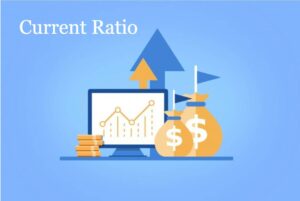Activity Ratios assess the efficiency of the business in using its resources to make maximum possible revenue. And also measures how well the resources has been used by an enterprises.
Further, it measures the effectiveness with which the enterprise uses in available resources. In addition higher the activity ratio means better use of capital/resources which in turn , means better profitability ratio.
Topic cover i.e. types of activity ratios
1. Inventory turnover ratio
2. Trade Receivable/Debtors’ turnover ratio
3. Creditor turnover ratio
4. Working capital turnover ratio
All these ratios also known as asset management ratios, performance or efficiency ratios.
1. Inventory/ stock turnover ratio
It measures how many times an enterprise sells and replace it inventories. Means how many times the inventory was converted into sales during the period.
It establishes relationship between the cost of revenue from operation i.e. cost of goods sold and average inventory carried during that period.
Further, low inventory ratio shows over-stocking and reduction of demand. Whereas, high ratio shows the better management of inventory and increase in demand for the product.
Inventory/ stock turnover ratio =
Cost of revenue from operation (or COGS)/Average inventory or stock = …….Times
Cost of revenue from operation (or COGS)
= Revenue from operation – Gross Profit
OR
= Revenue from operation + Gross Loss
OR
= Opening inventory + Net purchases + Direct expenses – Closing inventory
OR
= Cost of material consumed + Purchase of stock in trade + Change in inventory of FG, WIP and SIT + Direct expenses
What are the objective and significance of Inventory/ stock turnover ratio?
i) The objective of this ratio is to ascertain the efficiency of the inventory management.
ii) High ratio indicates more sales .
iii) A very high inventory turnover ratio indicates overtrading and it may result in shortage of working capital.
iv) Lower inventory ratio shows the inefficient use of inventory, overinvestment in stock, accumulation of stock at the end of the period in anticipation of higher price or unsalable goods etc.
2. Trade Receivable/Debtors’ turnover ratio
Debtors’ turnover ratio establishes the relationship between credit revenue from operations i.e. Net credit sales and average trade receivables i.e. debtors and bills receivable of the year.
Debtors’ turnover ratio =
Credit revenue from operations i.e. Net credit sales*/Average trade receivable** = …..times
*Credit revenue from operations i.e.
Net credit sales = Credit sales – sales return
OR
Credit revenue from operations = Revenue from operations – cash revenue from opeartions
**Average trade receivable =
Opening debtors + Opening bills receivable + Closing debtors + Closing bills receivables/2
OR
Opening trade receivables + Closing trade receivables/2
What are the objective and significance of Trade Receivable/Debtors’ turnover ratio?
i) It shows how quickly the debtors are converted into cash and cash equivalent . And thus shows the efficiency in collection of amount due from debtors.
ii) A high ratio is better since it indicates that debts are collected more promptly. And also indicates that company operates on cash basis & has quality customer that pay off their debts quickly.
iii) Lower debtors turnover ratio indicates inefficiency in collection and more investment in debtors than required.
iv) This helps in assessing if its credit policies are helping or hurting the business.
3. Trade payable/Creditors’ turnover ratio
Trade payable /Creditors’ turnover ratio shows the relationship between net credit purchases and total payable and average payables.
Average payment period /creditors velocity shows the credit period enjoyed by the enterprise in paying the creditors.
Further, higher turnover ratio or shorter payment period shows availability of less credit or early payment. It also indicates the enterprise is not availing full credit period. This boost up the credit worthiness of the firm.
In addition to the above lower turnover ratio / longer payment period indicates that creditors are not paid in time or increased time period.
Trade payable/Creditors’ turnover ratio =
i) Net credit purchases/Average trade payable = ……..times
Average trade payable = Opening trade payables + Closing trade payables/2
OR
= Opening trade payables+ Opening bills receivables +
Closing trade payables + Closing bills receivables/2
ii) Average payment period or average =
Average trade payables/Net credit purchases x No. of months/ no. of days
OR
Months (or days) in a years/ Trade payables or creditors’ turnover ratio
4. Working capital turnover ratio
It shows the relationship between working capital and revenue from operations or net sales. It shows the number of time a unit of rupee invested in working capital produces sales.
Further , to ascertain whether or not working capital produce sales.
Higher the ratio , better it is , but a very high ratio indicates overtrading – working capital being inadequate for the sale off operations.
Working capital turnover ratio =
Revenue from operation(Net sales)/Working capital = …times
OR
Cost of revenue from operations or cost of goods sold/ working capital
Note: Net working capital = Current assets – current liabilities
All of the above ratios are called activity ratios.
Refer : https://taxandfinanceguide.com/profitability-ratios/



